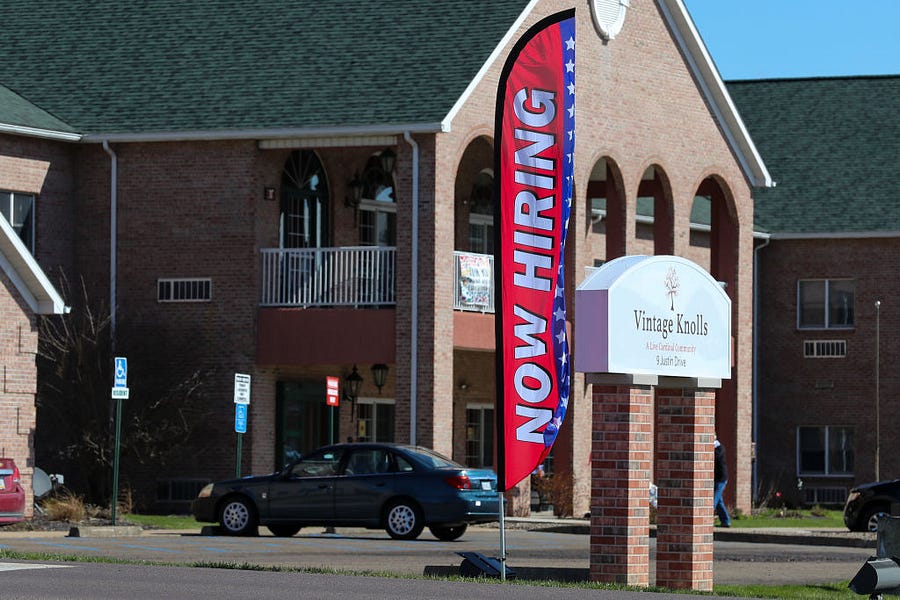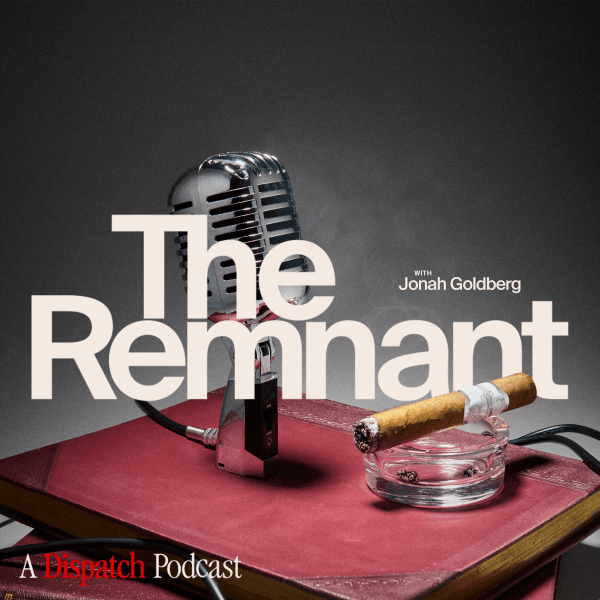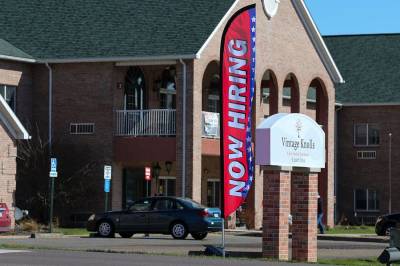The disappointing April jobs numbers have set off a panicky search for reasons why a fully caffeinated American economy isn’t matched by a sizzling jobs market and a plunging unemployment rate. Various explanations have been offered, including continuing fear of the coronavirus, particularly among workers in the leisure, service, and hospitality sectors; a lack of urgency in job-seeking due to stimulus-fattened household savings; and what many regard as overly generous unemployment benefits that may discourage work.
Emsi, a labor market research firm based in Moscow, Idaho, has offered a different explanation. Complaints from businesses about not being able to find workers are actually the precursor to a long-term labor drought—what Emsi calls a sansdemic, literally “without people”—that’s been building for decades. The firm has marshalled an impressive compilation of data to support the notion that while COVID-19 and the various federal relief and stimulus programs may be aggravating the labor crisis, they almost certainly didn’t create it.
The top-line factor in the labor market shortage, the Emsi report argues, is the shrinking pool of available workers caused by declining fertility. As a number of American Enterprise Institute scholars, as well as other public intellectuals, have noted, the U.S. has been below the “replacement rate” of births, about 2.1 children per family, for decades now. This baby shortage is now manifesting itself in smaller numbers of students going to college and workers entering the labor market. This reality can’t be undone without a time machine enabling couples to go back and make different decisions about family size 20 years ago. Moreover, as Europe and Japan have discovered, once the base of the demographic pyramid shrinks, it’s dreadfully difficult to figure out how to make it grow again. The young, fertile couples in their child-bearing years just aren’t there to make more babies. Call it a “Catch-2022.”
This demographics-driven tightening of the labor market has been exacerbated by a general retreat from work. For the past several years or so, we’ve been fretting about the exit of prime-age working-age men from jobs. But there are new factors subtracting from the pool of available workers, as well. One is the number of younger workers who are choosing part-time over full-time work, a possible side effect of the growing gig economy. The Emsi report shows the number of prime-age working men who voluntarily opt for part-time work went from 6 million in 2007 to nearly 8 million in 2019. This trend is particularly pronounced among 21- to 30-year-olds, who reduced their total hours worked by 12 percent between 2000 and 2015. In 2014, 15 percent of these men did not work a full week at any point in the year.
The American economy has been compensating for less work among men with increased workforce participation among women. For the first time in 2019, women made up a bare majority of the workforce. Then COVID-19 hit, cutting deeply into sectors of the workforce like leisure and hospitality where a disproportionate number of women work while simultaneously increasing the burdens women (mostly) bear on the home front as schools and daycares closed. Between February 2020 and February 2021, a total of 2.4 million women left the workforce, outpacing men by 600,000 departures.
If we have so many people not working, how are they surviving economically? The Emsi researchers make an interesting and novel claim that much of this non-work is being funded by boomer parents. Boomers drove the massive postwar expansion of the U.S. economy generating fat portfolios that their children will inherit and, in the meantime tend to cushion living conditions for their children, a historically high number of which are delaying marriage and home-buying. By 2030, millennial kids will inherit an eye-popping $68 trillion of their boomer parents’ wealth. The prospect of this transfer, the Emsi report argues, has reduced the urgency for education and career and helps promote the part-time work phenomenon. In other words, part of what’s creating a labor shortage is a proliferation of small-time trust-fund babies who are both living with mom and dad and waiting for the reading of the will.
This brings us to the truly grim part of the Emsi analysis. Money in stocks and bonds, retirement accounts—and in programs like Social Security and Medicare—is useful only if there are goods and services available to spend it on. Without the dynamism and productive capacity of a vibrant and growing workforce, we may be facing a future in which living standards decline because less stuff of all kinds is being invented and produced. (For those who remember their basic economics, too much money chasing too few goods is a recipe for—anyone? anyone?—yes, inflation.) Moreover, the Emsi report argues, there are precious few options for staving off this future for our descendants. A smaller population means fewer brains to find technological bridges for the labor gap. Fertility rates are falling across the world, making it harder to meet labor needs with immigration. (Note to immigration critics: You or your children may live long enough to wish for a far more open border.)
So what can we do to begin adapting to a future with fewer people? Extending working lifetimes is extremely important. The economy will need the skills, experience, knowledge and, frankly, labor hours of older workers. Businesses and policymakers should be incentivizing extended careers through part-time opportunities and other flexible working arrangements for those who might otherwise retire too soon. We also need to get smarter about retraining midcareer workers and helping all workers, through improved labor market data systems, to match their skills and interests to labor market demand. Also worth considering are programs and subsidies that help workers, and particularly women and minorities, sustain their careers, especially when those are in critically important fields. None of these will “fix” the problem, but they will buy time and mitigate some of the worst impacts.
In the hurly-burly of our politics, it’s easy to end up majoring in the minors by confusing long-term challenges, like a demographic crunch for which there may be no remedy, with short-term policy fights like the negative work effects of too-generous unemployment benefits. The post-COVID scramble for employees is a workforce warning-shot across our bow. We need a course correction that can help us manage our way through what appears to be an increasingly difficult demographic transition.






Please note that we at The Dispatch hold ourselves, our work, and our commenters to a higher standard than other places on the internet. We welcome comments that foster genuine debate or discussion—including comments critical of us or our work—but responses that include ad hominem attacks on fellow Dispatch members or are intended to stoke fear and anger may be moderated.
With your membership, you only have the ability to comment on The Morning Dispatch articles. Consider upgrading to join the conversation everywhere.